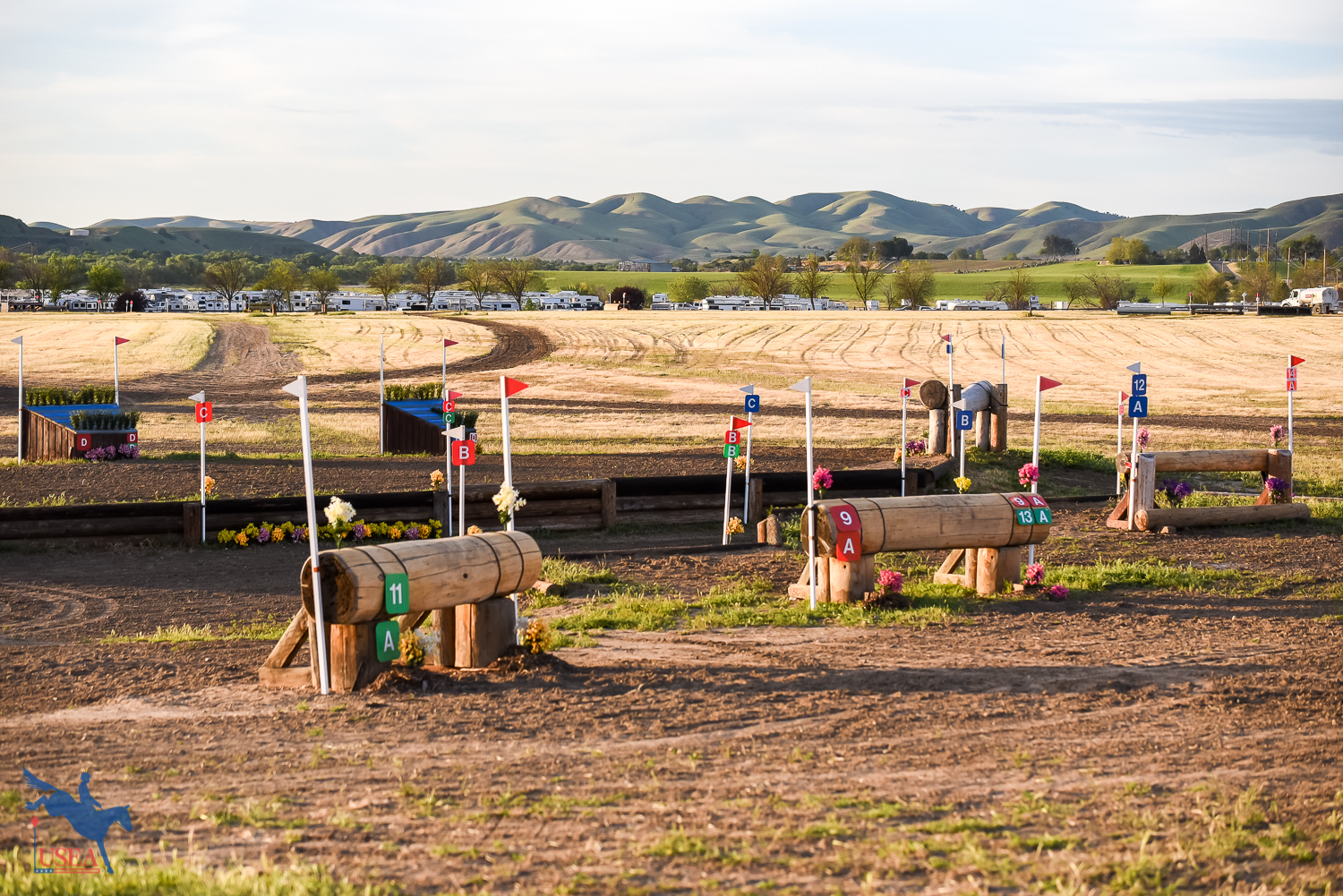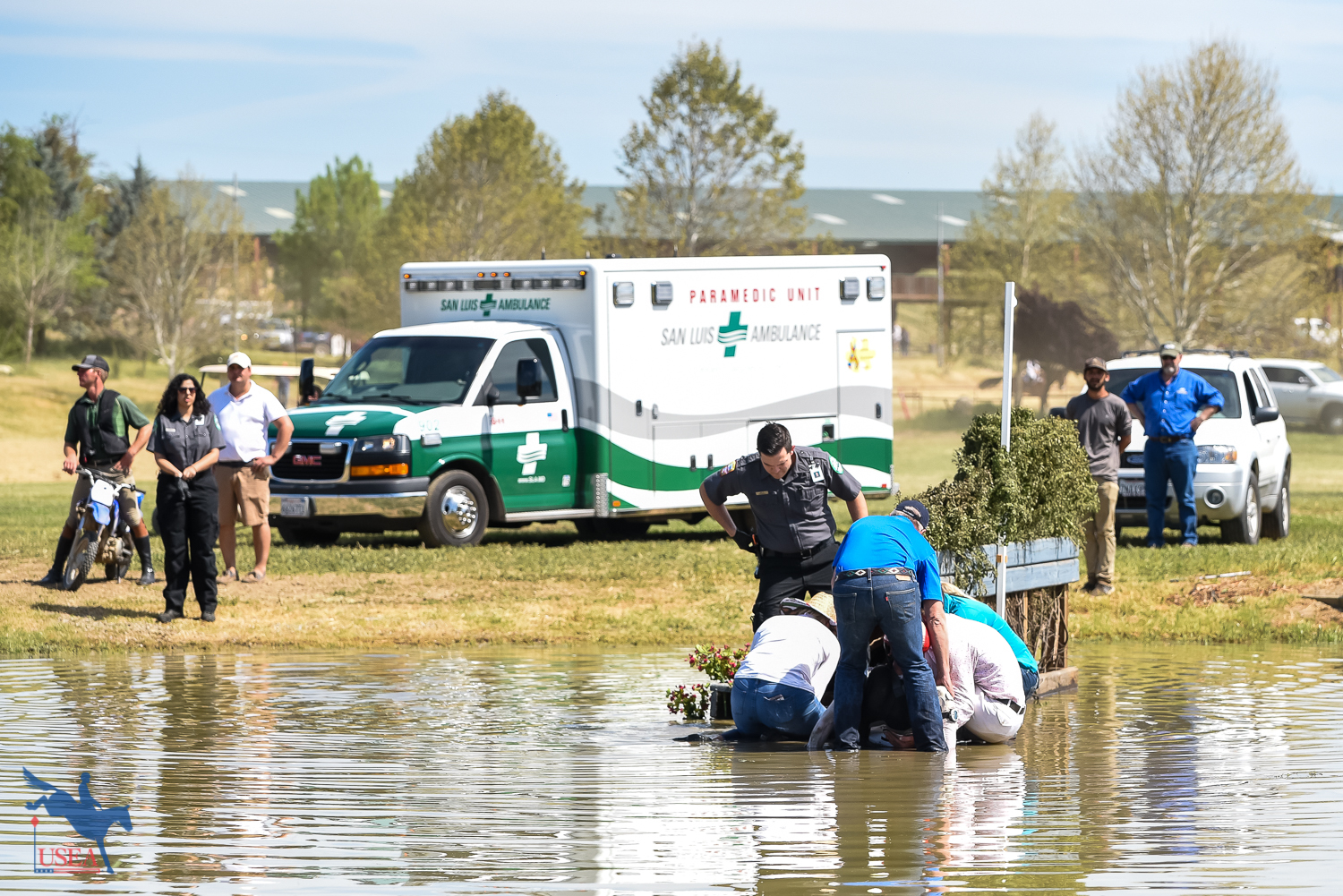
This article was originally published as one piece in the May/June 2015 issue of Eventing USA magazine. It has been updated to reflect current statistics and split into three parts for publication on the USEA website. Click here to read part one and stay tuned for part three.
As competitors rise through the levels, they often see the costs associated with competition rise and, unfortunately for most organizers, this can’t be avoided. With fewer competitors requiring more jumps, officials, footing management, etc., the expenses for running higher levels – especially FEI – are greater than lower levels.
Christina Gray, who works with events all over the West Coast including Twin Rivers, Southern Arizona, Aspen Farms, and Rebecca Farm, observed that as you add the upper levels, you require a designer with the training and licensure to design at those levels. “It takes more for [designers at the upper levels] to get a license at a higher level, so their fee will be at a higher level versus someone who might just be licensed through Preliminary,” she said. “When you have more levels, you increase the amount of time that it takes your designer to create the courses.”
Then, the cost of building the jumps it takes to build an upper level or FEI course also comes into play. The courses are longer, the fences are bigger, and additional safety considerations like adding frangible technology all add to the expenses for an upper level or FEI course. Emily Holmes, who organizes events at the Florida Horse Park, explained how costs tend to multiply exponentially as the levels increase. “Beginner Novice jumps are cheap to build because they’re so small and require much less lumber – they’re the skinniest width and the smallest height – and it’s the smallest number of jumps needed,” she said. “As the jumps get bigger, your lumber cost increases. If Beginner Novice is 2’7” and Advanced is 3’11”, that’s a huge difference in lumber. Then, of course, it takes a lot longer to build the upper level jumps than it does to build the lower level jumps.”

“Footing has become more and more important as our sport has grown,” noted Gray. “So more and more money is having to be put into footing and maintenance. If you’re lucky, you have your own equipment, but you did have to buy it at some point. Then there’s the gas, the maintenance on the tractor, and the piece of equipment whether it’s a mower, an aerator, or a drag. Then, if you have to do irrigation, that’s another expense. And you have to consider the operator you have on that piece of equipment – they are going to cost a certain dollar amount per hour. It all adds up.”
Like with the cross-country course designer, other officials-related expenses increase as the levels increase. “As your official’s license increases, so does their day fee,” Gray said. “For FEI competitions, you have the added expense of having to have a vet and a steward on grounds, and sometimes you need multiple vets or stewards depending on the size of your event and the number of levels you’re running. Then you have to consider the costs associated with things like offering prizes or what I like to refer to as the ‘sparkle’ of the VIP tent. Those things do cost money and have to be paid for some way. Whether those things come from an entry fee or from sponsorship money, at the end of the day it all adds up.”
At the event Holmes runs at the Florida Horse Park, she has an increase in officials by 50 percent for FEI events, going from about 30 officials to run a 600-entry horse trials to 45 to run the Ocala International Festival of Eventing, which offers Novice through Advanced horse trials and CCI*-L, CCI2*-L, and CCI3*-L divisions.
Security is also a concern at events offering the very highest FEI levels. “Each of the security personnel at stabling are paid an hourly rate and they’re on around the clock – it’s a big expense that you might not think is much but then it starts to add up when you have 24/7 security at $25 to $35 dollars an hour,” Gray said.
All these factors combine to increase the costs associated with running events at the upper levels, and with fewer entries at the upper levels to help pay for these costs, entry fees rise.

Gray emphasized that the outlay for things like ambulance, EMT staff, and veterinary coverage is no small portion of the budget, but that it is absolutely essential to ensuring the safety of the horses and riders. “A lot of people don’t realize that having an ambulance there is up to $200 an hour,” Gray pointed out. “And it’s similar in terms of veterinary coverage and having a farrier on grounds. It’s not half of your entry money, but it’s definitely a large portion of it. It’s a necessary expense – I don’t think any of us ever argues with that – and it’s one of those things where you feel good when you know you have good people handling it. It does add up, but it’s about keeping our sport safe.”
Organizers want to keep the cost of an entry down, but face many challenges as costs in all areas of life are on the rise, especially in respect to travel. Also, many roles that previously were filled by volunteers (announcers, cross-country controller, scoring) are now filled by paid staff members.
Both Mary Fike, organizer of the Kentucky Classique, Midsouth, and Spring Bay Horse Trials, and Nancy Jones, head of the Seneca Valley Pony Club Horse Trials Organizing Committee, stated that the pressure to constantly improve their events, whether it is jump construction, footing, or amenities adds a huge cost and stress level. “The challenge is trying to maintain a balance between improvements needed to keep our venue interesting to competitors while not spending so much that we need to raise prices,” said Jones. “The costs for officials have been rising, and if you can’t find folks locally, then you are looking at sometimes huge transportation costs. We also try to bring in a variety of technical delegates and presiding judges, to provide a fresh view of our operations.”
For Holmes, who frequently runs as many as 600 horses at events at the Florida Horse Park, she can control the cost of her entry fees because of the sheer number of competitors. “If you’re running 600 horses, you can keep your entry fee ‘normal’ because there’s so many people.”
“I think we all wish that we could charge as little as possible to run our events,” said Gray. “Most event organizers were or are event riders themselves, so they all feel the pain of when you have to scratch your horse the day before an event and we say, ‘We’re really sorry, we can’t give you a refund.’ None of us want to do that, it’s just a matter of we have hired people and rented your stall and have all these expenses we’ve already outlaid expecting you to come compete. We’re creating an environment and an atmosphere for you to come enjoy and that’s a product that you’re purchasing. That’s what you are paying for with your entry fee. At the end of the day, is it that organizer or property owner’s responsibility to cover these costs?”
“A lot of organizers are in the boat of we don’t want to jack up entry fees, but with prices going up on everything from car rentals and hotels to the cost of lumber, it’s hard to balance,” Holmes said.
Stay tuned for part three of this series, which covers the benefit to events when you enter early and how refund policies are structured.
Did you enjoy this article? Want to receive Eventing USA straight to your mailbox? Members receive Eventing USA as part of their USEA Membership or you can purchase individual issues from the USEA Shop.
The United States Eventing Association (USEA) is pleased to welcome back StableSecretary as a Contributing Sponsor of the USEA Eventing Coaches Program (ECP). A valued supporter of the program, StableSecretary continues to demonstrate its commitment to the education and advancement of eventing coaches across the country.
The second edition of the USEA Interscholastic Eventing League (IEL) Championship at Stable View in Aiken, South Carolina, will be underway in just three days! Along with the 154 Collegiate entries that will contest their national championship, 70 IEL entries representing 15 Clubs will form 18 teams to go head-to-head in this year's event on May 2-4.
It's officially time for the "Happiest Horse Trials in the World" this weekend! There will be 155 intercollegiate entries representing 16 schools joining forces to create 41 teams to compete in the 2025 USEA Intercollegiate Eventing Championship. Alongside the USEA Interscholastic Eventing League (IEL) Championships for the second year in a row, collegiate members will converge on Stable View in Aiken, South Carolina this Friday, May 2 through Sunday, May 4.
For Lily Dal Cin, college has been as much about grit and growth as it has been about horses and art. As a member of NC State’s intercollegiate eventing team, she’s weathered setbacks with her horses while continuing to ride, support her teammates, and pursue a demanding degree. Through it all, the team has been her anchor.